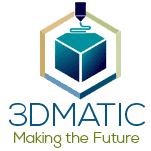Unquestionably, Additive Manufacturing, known as 3D printing, has made an amazing inroad or encroachment on traditional manufacturing methods. 3D printing has several advantages over traditional manufacturing, such as reduced cost, reduced transport costs, shorter time to market, and rapid prototyping during the product development cycle.
The following list highlights products that have been manufactured with 3D printing at reduced cost and time compared with traditional manufacturing methods:
- An automobile company used 3D printing to build a fully customized, electric-powered car.
- Many dentists have used a 3D printer to print a denture in a single visit, whereas traditional manufacturing requires several weeks.
- Many aeroplane parts have been made with 3D printers.
- Prosthetics and artificial limbs have been made with 3D printers.
- A private company in China used 3D printing to build ten houses in 24 hours.
This impressive list is very short, and it is only the tip of the iceberg. The list raises these questions:
- Are there limitations on products that can be 3D printed?
- Are there disadvantages of 3D printing relative to traditional manufacturing?
- Could traditional manufacturing be completely displaced by 3D printing?
The answer to the last question is the main focus of this article.
Are there limitations on products that can be printed in 3D?
A few years ago, 3D printers only made plastic-based products. The limitation or showstopper for 3D printing was that it could not print products with adequate structural strength and durability. However, that has changed because 3D printers can now print metal-based products such as aeroplane parts.
Actually, 3D printing is venturing into the printing of food products and human organs. For this reason, it may be premature to say that the technology is limited by the types of products which can be printed. It seems as if the limitation on what can be 3D printed is not dependent on the printing technology. The limitation seems to be dependent on the “ink material” used.
Consider these examples:
- Many people would not be eager to eat 3D-printed food unless the food material (or ink) is natural, untainted, and unprocessed. The food products that would appeal to a customer will probably be made with food materials (or ink) in paste form, such as chocolates, cakes, or similar food products.
Food products that include meats and more exotic dishes may not appeal to a customer if they are made from food pastes formulated with chemical additives to make them printable. - It is not likely that 3D printed human tissue can function in a human body without failure and tissue rejection. Although it is not wise to say that 3D printing of human tissue will never happen, it will probably take a long time, with significant research and development, before it happens.
Often, transplanted living tissue from a donor to a patient faces the risk of tissue rejection. Perhaps it is safe to say that 3D printed tissue has far less chance of surviving in a living body.
Are There Disadvantages Of 3D Printing Relative To Traditional Manufacturing?
Clearly, 3D printing has distinct advantages over traditional manufacturing, because 3D printing provides shorter time to market, and reduced cost. In spite of these advantages, does 3D printing have disadvantages? The answer is yes, and here is a brief list of disadvantages:
- 3D printers consume a lot of energy (about 50-100 times more than injection molding, casting or machining) in order to melt plastics with heat or lasers.
- 3D printers, when used in the home or office, pose a health hazard especially for people with asthma, because the printers emit very fine airborne particles which can settle in the lungs or in the bloodstream.
- 3D printers use a lot of plastics which produce non-biodegradable waste. Such waste is not easily disposed of.
- 3D printed guns and weapons are likely to evade detection by metal detectors and x-ray scanners. This will make it easier for criminals to use 3D-printed weapons to commit criminal acts.
- 3D printers could easily print drugs that could evade licensing and monitoring organizations, and thereby open the door for organized crime. Likewise, potentially dangerous objects could be printed which cannot be controlled or detected by regulatory organizations.
- 3D printers have locations or spaces where bacteria can easily grow. This could become a problem when food products are printed.
Could Traditional Manufacturing Be Completely Displaced By 3D Printing?
Undoubtedly, 3D printing has taken foothold within the traditional manufacturing workplace, and the trend to replace traditional manufacturing with 3D printers is growing. One area in which 3D printing threatens traditional manufacturing is rapid prototyping, which occupies significant time and effort during the product development cycle. With 3D printing, engineers and designers can print many prototypes, and select the best choice in significantly reduced time.
Traditional manufacturing still has the edge over 3D printing of metal based products, because 3D printing of metal based products is still in its infancy, and the technology has not matured.Are there other reasons to believe that 3D printers will not replace traditional manufacturing? There seems to be only one main reason.
There are products that require high-volume production. It may not be cost effective to assemble enough 3D printers to match the high volume production of an automated production line. Even if enough 3D printers were used, they would consume exorbitant amounts of energy, and they could emit intolerable volumes of harmful or toxic byproducts.
Conclusions
Although it is probable, it is too early to conclude that 3D printing will completely replace traditional manufacturing. However, the improvements needed to make this happen are on the horizon, because 3D printing is still a maturing technology.
What seems likely is that traditional manufacturing will adopt 3D printing as a quantum leap in improved manufacturing methods. The transition should not be too painful for organizations which rely on traditional manufacturing methods.

